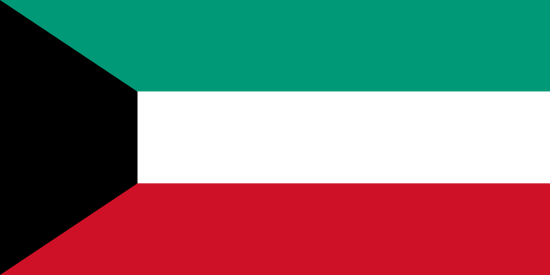Kuwait is located on the Persian Gulf in western Asia, and became an independent state in 1961. The area that makes up present-day Kuwait has historically been part of several great powers: the caliphate in Baghdad, the Mongol Empire and later the Ottoman Empire, which founded the province of Kuwait in mid-1700.


| Capital: | Kuwait City |
| Biggest city: | Kuwait City |
| State: | schejkdöme |
| Language: | Arabic |
| Religion: | Islam |
| Surface: | 17 820 km² |
| Population: | 3.5 million (2013) |
| Population density: | 151 residents per km² |
| Life expectancy: | 78 years |
| Illiteracy: | 7% |
| Currency: | Kuwaiti dinar (KWD) 1 dinar = SEK 27.64 |
| GDP per capita: | $ 39,000 (2010) |
| Time difference: | +2 hours |
| Electricity: | 240 V AC, 50 Hz |
| National Day: | February 25th |
| Country area code: | 965 |
| 2-Letter country abbreviation: | KW (See more abbreviations on Abbreviationfinder) |
| Business: | service sector 90%, industry 9%, agriculture 1% |
| Climate: | dry; cold winters and hot, humid summers |
From that time on, Kuwait is still ruled by the Sabah Sheikh family. The province was ruled by the name of Constantinople. When the Ottomans threatened to tighten control of the area in 1899, Kuwait turned to Britain for support and became its protectorate with a high degree of autonomy and independence until its independence in 1961.
Kuwait invaded Iraq in 1990 and an Iraqi governor was appointed. A United Nations-led alliance repulsed Iraqi troops in February 1991 and reinstated the emir. This war is often called the Gulf War or the Kuwait War.
Kuwait consists mostly of desert, with small level differences. The climate is dry and hot. In the northern part of the Persian Gulf off the coast of Kuwait, there are a number of islands located; the largest is Bubiyan which is mentioned as one of the fifteen areas that encompass what is called the “cradle of humanity”.
Parliament consists of 50 members, who are elected every four years. As Kuwaiti citizenship is very limited and only men have the right to vote, only 10 percent of the population is entitled to vote.
Through its natural resources of petroleum, Kuwait has become one of the richest countries on the Arabian Peninsula for the past fifty years.
ELECTRICAL OUTLET
Electricity and electrical outlets in Kuwait
Voltage: 240 V
Frequency: 50 Hz
Type of plug: D, G
Need an adapter: Yes, Swedes need an adapter.
CLIMATE AND WEATHER
Weather in Kuwait City
| Climate | Jan | Feb | Mar | Apr | May | Jun | Christmas | Aug | Sep | Oct | Nov | Dec |
| Average temperature °C | 13 | 15 | 20 | 25 | 32 | 36 | 37 | 37 | 33 | 28 | 20 | 14 |
| Day °C | 18 | 20 | 26 | 32 | 39 | 44 | 45 | 45 | 41 | 36 | 26 | 19 |
| Night °C | 7 | 9 | 13 | 18 | 24 | 28 | 29 | 29 | 25 | 20 | 13 | 9 |
Kuwait City
According to Countryaah, Kuwait City is the capital of Kuwait and has 2.3 million residents (2005). The city is located on the southern shore of the Gulf of Kuwait, northwest of the Persian Gulf. The country’s parliament, Majlis Al-Umma, as well as most government agencies and the headquarters of most Kuwaiti companies and banks are located in the city, making it indisputably the country’s political, cultural and economic center. The city was invaded and besieged by Iraqi troops during the Gulf War in 1990 and was largely destroyed. Today, however, most of it has been rebuilt.